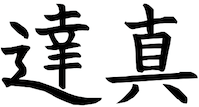I work for a non-profit. A big part of my job right now is networking, and I often meet other people and organizations whose interests, skills, and goals bear some relation to the work I’m doing with my organization. As such, one question that’s been on my mind quite heavily is “How can organizations with different goals and methodologies coordinate and collaborate effectively?”
I recently found one clue on the road to answering this question in the form of a framework, the Westrum Typology. I found out about it from Ben Mosior (who, in turn, learned about it from DevOps Progressions, a talk by Andrew Shafer, @littleidea). The Westrum Typology is named for its creator, Ron Westrum, who shared the typology in a 2004 paper, A typology of organisational cultures (notes). It posits that the habits an organization has around information sharing are predictive of many elements of an organization’s culture, and distinguishes three general profiles of organizational information flow and culture: pathological (power-oriented), bureaucratic (rule-oriented), and generative (performance-oriented).

Example output from the Westrum Typology Cheat Sheet (repository)
Your team, group, or organization might (and probably does) have some characteristics of more than one type. In any case, assessing which characteristics your organization has can give you a sense of your strengths and weaknesses not only in terms of information sharing, but in other aspects of culture. In his paper, Westrum was concerned about medical safety in environments like hospitals; but since information sharing is indicative of how an organization approaches problems, the paper also argues that the typology is indicative of an organization’s overall creativity. He speculates persuasively that “generative organisations (those with good information flow) are probably more creative, more harmonious, and safer.”
Now, the typology seems to deal with just one team or organization, and as such, might seem unrelated to my original question, about coordination between organizations. But it actually seems likely that information flow could be just as predictive of the outcomes of cross-organizational collaboration. My hypothesis is that organizations with different goals and methodologies are more likely to collaborate and coordinate more successfully if they both have mostly generative Westrum typologies. If their types are mostly pathological or bureaucratic, they will likely run into trouble in collaborating (e.g. inter-organizational drama), and will need to make major changes in both organizations before their outcomes improve.
It also seems probable that generative organizations are more likely to succeed at their goals (both short-term and long-term; or, lower failure rates) and retain employees (more employee satisfaction, less burnout). These point to the happiness of employees and the success of the organization, both on its own and in relationship to other organizations.
This post contains most of the background, theoretical information that I’ve encountered since learning about the Westrum Typology. If you’re interested in applying this knowledge, here are some options:
- Andy Kelk shares how to apply this typology to real findings with your team, based on research by @nicolefv, in Using the Westrum typology to measure culture
- In the last couple of days, Ben Mosior and I developed a tool that lets you graphically represent the Westrum typology of your team. You can check out its source on Github.
